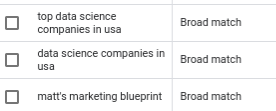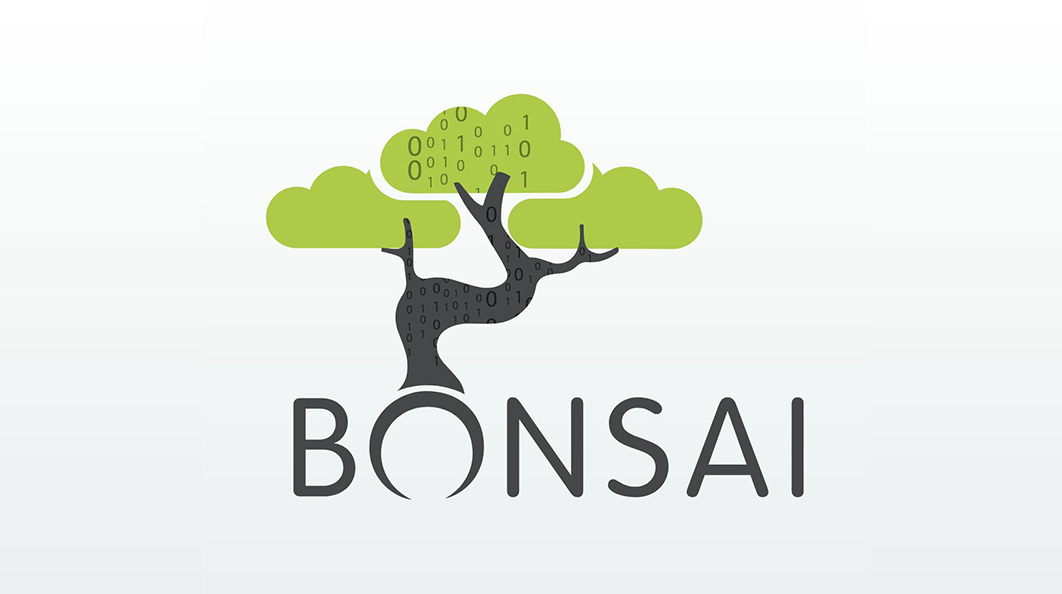Like a lot of start-ups, Bonsai received a promotional $150 Google Ads credit to try out Google Ads! We’ve even been fortunate enough to hear from some of the very attentive customer service people who’ve taken the time to introduce themselves to us. [Note: as a former “866”er from back in the day, I have to say they did a great job!] Something tells me that this promotional dollar could have been better spent by Google (I’m aware of Google Ads, thanks team!), and we have no paid marketing strategy to speak of here at Bonsai in 2020, but nonetheless it was impossible to resist a free chance to set up a little experiment.
Now, to say that we know a little something about how to maximize return-on-investment from a Google Ads perspective is probably a little modest. Did we apply all our expertise, data science, measurement protocols, econometric algorithms and domain expertise to once and for all answer the question: “What’s the maximum economic value of running Google Ads?”
No. We thought there was a better, more practical question we could ask.
“What really happens with this promotional money – and then for the subsequent marketing investment – for a typical small business?
What if we spent an hour setting up an account, writing an ad, and seeing what happens with this free $150? ”
This seemed like a way more interesting question to explore. So that’s what we did!
- We opened an account, activated our promotional $150, and set to work running a Google Ad for Bonsai.
- We did not allow ourselves to spend more than an hour on the entire process. This means we set the budget, picked some keywords, wrote an ad, and selected our targeting audiences and locations all in that time period.
- Was this a true example of what a typical small business owner will experience? Eh, we know A LOT about this, and did about 50 things reflexively that we knew were right without even thinking. Our accounts are connected, we could track any actions we wanted back to our Google Ads clicks, etc. So…
- A typical small business will see far less success than we did with this $150 because of it. But as you read on, you’ll see our discovery mission did reveal a few important concepts for any business to reduce wasted Google Ads spend, newbie or savvy, big or small. Let’s dive in.

Here’s the results of our first week running this ‘small business’ experiment on Google. How do you think it’s going?
So What Did We Learn?
Above you see the results of our site traffic acquired from Google Ads during our first week of our little experiment. And by traffic, we mean lack thereof! As you can see, we ended up winning 4,521 ad auctions (showed our ad!) and got 55 clicks. The landing page for these clicks was correct — so we were quite surprised to see that we only won 2 users to our website!
What the heck happened? We had to learn more. So we poked around the “Query report” on Google Ads [this report tells you what specific term people searched for to see and click on your ad] and immediately saw what was going on:
Essentially, we’d found people (or machines) that were clicking on our ad and not sticking around very long. In fact, we probably found one very eager person/machine, maybe two. We’re they in the market for a top data science company in the USA? Likely quite the opposite. This is the act of a digital agency, data science company, or some “competitor” of ours that actively tries to click on ads to spend their ad budget, get them to become frustrated with wasted ad spend and leave the Google Ads auction so that the company paying for this clickspam service (usually done overseas) can maintain their ad position and leads it generates while reducing the CPC they end up paying. For industries with higher customer values, many companies see a net-positive value in the arbitrage of paying a company willing to commit ad fraud on their behalf.

Ah yes! ‘top data science companies in usa’ — a totally normal, real human, not a machine trying to clickspam competitors sounding way of searching!

We confirmed the questionable search behavior by checking the User location report. Indeed, we’d been getting more clicks from India & Bangladesh than we’d gotten from the USA – despite only targeting the USA in our campaign!
So why did this happen?
Did Google scam us?
Did clickscammers successfully eliminate us as competition?
To answer these in order:
- Because we forgot to check a little box in geo-targeting our campaign.
- No, but it’s certainly tricky to ensure it doesn’t happen.
- And no, not technically, but it has the chance to do so for many small businesses.
What did we do wrong?
In short, we forgot to exclude people who don’t live in the US, but are “looking for businesses” located in the US. This is a classic mistake, and a huge window for competitors looking to bleed your marketing budget dry with a little dirty pool.

unless you are in an industry where it’s more valuable to reach users who express geo intent in their query, not their physical location (i.e. industries like Travel), make sure your marketing campaign is set to only reach users “in or regularly in your targeted locations”. We would link to an easy Help Center article here to walk you through doing this step by step, but Google doesn’t yet have one.
Every new campaign is defaulted into the broadest targeting criteria possible. It’s “recommended” by Google (Question: Recommended based on what? More on that later). We moved through the process of making our ads without reviewing this setting, and paid the price. Quick rule of thumb though – if a company’s platform offers you multiple choices, and then recommends one of the choices (!?!?!) before asking you anything about your business or goals, be very skeptical and pause before learning more.
Doesn’t Google Owe You A Refund?
Here’s where it gets tricky. Why doesn’t Google owe me a refund? Why doesn’t Google get inundated with clickspam and click fraud requests from the highest ad spenders in the world on a constant basis? After all, we were victimized by the very first ads we showed on the very first $150!
Because Google’s algorithm and pricing model is very, very good. Clickspam as a practice, even though it “worked” on our little experiment, actually doesn’t work at all in the auction writ-large. This is because even though it is ‘cost-per-click’ advertising, believe it or not you aren’t paying for clicks on Google search ads! You are actually paying for impressions.
It takes some seriously sophisticated domain expertise to even grasp this, much less leverage this successfully, but the reality is that for every next “click” our ads won, regardless if they were legitimate customers or fraudulent actors, those clicks gradually decrease the cost of our next click. For example, if we ran $1,000 of ads and won 80 fraudulent clicks and 20 legitimate clicks one week, we’d be able to invest $1,000 the next week and expect about 100 fraudulent clicks alongside 25 legitimate clicks. This would continue, clickspammers would click more and more, and our legitimate click total would keep increasing, until we started receiving 100 legitimate clicks for our $1,000 per week.
This is great for Google’s customer support costs! It means that given large enough numbers, it’s essentially impossible for advertising dollars to be wasted on spam or fraud. If you are P&G , Amazon, Nike, or any other major global brand you are completely wasting your time if you are asking anyone to look into Google Ads click fraud, but…
It’s Completely Unfair & Terrible For Small Business
That beautiful theory & math breaks down in the real world of small business. This is because of the fact that many small businesses don’t have that next $1,000 to spend into digital marketing! If that first $1,000 is wasted, they cannot afford to ride out the spam storm. They need to see value immediately, grow from the marketing exposure profitably, and then can reinvest those dollars into growing marketing budgets, which in turn grow this business, and develop wonderful scale.
- Will Google read this article and investigate what is a comically clear and obvious click fraud problem in our search auctions (digital & tech services)? They will not.
- Will they read this blog and refund us $150? They will not.
- Are we reaching out to our friends back @ Google to pull some strings? <chuckle> Don’t worry everyone, we will not.
- Is there any viable legal means for a small business to recoup this value stolen by fraudulent competitors? At this scale, probably not. A lawyer charges more than $150 per hour, much less for completed successful claims.
So what can be done? All you can do as a small business is try to let the law of large numbers work in your favor, just like the big companies. If you have $1,000 you can allocate to digital marketing spend, do not allocate all of that $1,000 at once. Pace it out slowly – spend no more than 10% of that budget during your first period. Then, evaluate that 10% – what’s going right? What’s going wrong? Adjust or ask for help as needed. Then spend the next 10%, and the next, and so on. Google Ads and Facebook Ads can work for any business, but you need to stack the odds in your favor. Remember to start with your most precise target audiences and settings when starting out on Google or Facebook Ads, and work your way up from there! Doing so any other way will expose you to the unfairness baked inherently into the machine.
So Did Our Changes Work?

Here’s a screenshot from the second week of our experiment, after we fixed our targeting settings. Things are looking up!
So we fixed our ad targeting settings, and what happened? Viola! Success. The next period saw 41 clicks on our ad, and we received 40 users who visited our website. While that’s a substantial drop in clicks (55—> 41), it was an incredible increase in value (2 users —> 40 users). We won’t say what the material change was in business results – after all, this was just a little fun experiment — but it led to some real world positive impact for us as well.
Parting Thoughts & Greater Lessons
Something every small business owner should know – and for that matter, every major corporation’s digital team: Digital media advertising networks, whether they are small and suspect, or gold-standards like Google and Facebook, are all designed to first and foremost spend your allocated ad budget. Second-price ad auctions are quite literally trying to monetize every impression – for Facebook, that’s screen space / page views and for Google, it’s search results.
When you ask Google or Facebook’s tools “Is my ad working?” or “Is my campaign optimized?”, remember that they are not going to answer the question you really mean – “Is this ad driving value for my business?”. Instead, their default answer will always be to the question “Will my campaign spend the allocated daily budget?” So when you see Google’s optimization score next to your campaign, remember that it is simply the chance your campaign a) spends your daily budget in the ad auction, and b) you stay around to spend again tomorrow. It doesn’t evaluate whether your campaigns are set up to drive value for your business. It will definitely never catch issues like the ones we found in our very quick small business experiment.
Can Google or Facebook’s automation drive value for a small business? Absolutely – but they require that the instructions you give – the setup for your campaigns, targeting, bid strategy, and measurement protocol – are all appropriately and precisely deployed. If you miss steps along the way, the risk of loss is terribly high, because the default answer Google or Facebook are asking your account every day is “Are you going to spend your ad budget?” And left unconstrained, those platforms will ensure your budget is indeed spent regardless of how well it does to improve business outcomes.
We are proud to serve small businesses at Bonsai! We have more small business customers today than any other segment. Though we’re deeply technical, we’re proud to apply techniques typically reserved for the world’s deepest pockets to waste-reduction and business basics that SMBs need most. We have no serving or media fees for our bid management services, and no operating costs for successful measurement and analytics protocols we deploy for our SMB customers. Just some free, clear consultation to uncover what you need, an up-front fee for us to initiate the work required and confirm it’s deployment, and you are on your way to risk-free incremental value from your digital investments.
We even figured out how to help SMBs get a hold of us: we have a phone number now! tel:(888) 758-3282
Or you can just find us the old-fashioned way:

